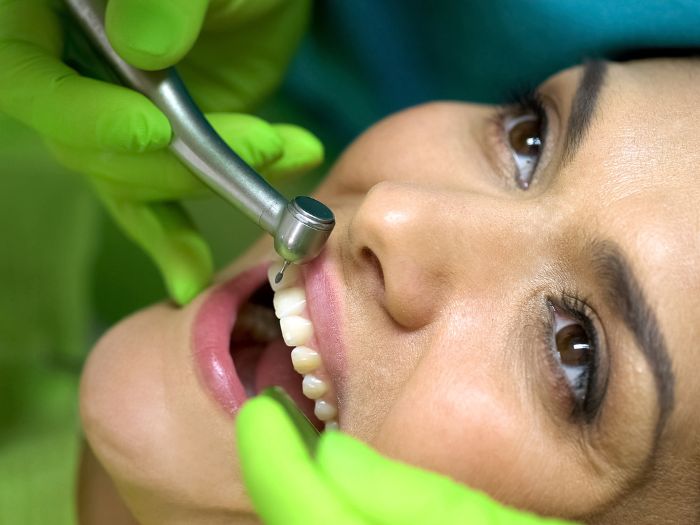In all cases, the tooth should be addressed as soon as possible. Otherwise, the exposed tissue can quickly deteriorate and cause significant pain. You also risk needing the entire pulled. If you’re dealing with a chipped tooth, here’s what you should consider.
What to Do After Chipping Your Tooth
Regardless of how the chip occurred, it should not be left unaddressed. Instead:
- Rinse the tooth gently in warm water to remove any debris.
- Address the pain by rinsing your mouth with saltwater, sucking on an ice pop or using an over-the-counter pain reliever.
- If the chipped tooth now has a sharp edge, prevent lacerations of your tongue and cheek by attempting to cover it. Bite into a gauze pad until you see a dentist.
- Gather and hold onto any fragments of the broken tooth you still have. Store the tooth in milk, so it doesn’t dry out.
- Only consume liquids and soft foods for the time being.
- Make an appointment with your dentist as soon as possible.
Treatments for a Chipped Tooth
For a chipped tooth, treatment will be based on the degree of damage, including how much broke off and if decay and infection are present. Potential treatments include:
- Dental Sealant: This treatment keeps out bacteria and helps repair a cracked tooth.
- Fillings: For teeth farther back in the mouth, a filling may be used if the chip is small and infection has yet to occur.
- Bonding: This method is preferred for smaller chips toward the front of your mouth. After your dentist etches the enamel and applies an adhesive, composite resin is shaped to your tooth to restore the shape and appearance.
- Veneers: Veneers are another option for a chipped front tooth. A porcelain veneer can smooth out the appearance of slightly larger cracks and replace the portion that broke off. Similar to bonding, the enamel will be etched before the veneer and a cement are applied and hardened.
- Crowns: Dental crowns help restore the shape, appearance and bite functionality when a tooth has experienced significant decay or a larger portion has broken off. Porcelain, resin or enamel protects the tissue to reduce any pain and prevent further decay. Traditional and same-day crowns may be used to repair a chipped tooth.
- Root Canal: A crown may be preceded by a root canal if the top portion of the tooth has cracked into multiple parts or broken off completely, exposing the pulp and nerves. Your dentist will remove any dead or infected pulp before cleaning and sealing the root canal. From here, a post and filling will be added to support the crown and preserve what remains of your tooth.
If there is not enough pulp and root to save, your dentist may remove the tooth and recommend it be replaced with a crown or implant for stability.
To schedule an appointment for your dentist to look at a cracked, chipped or damaged tooth, contact our Shelton office today.

